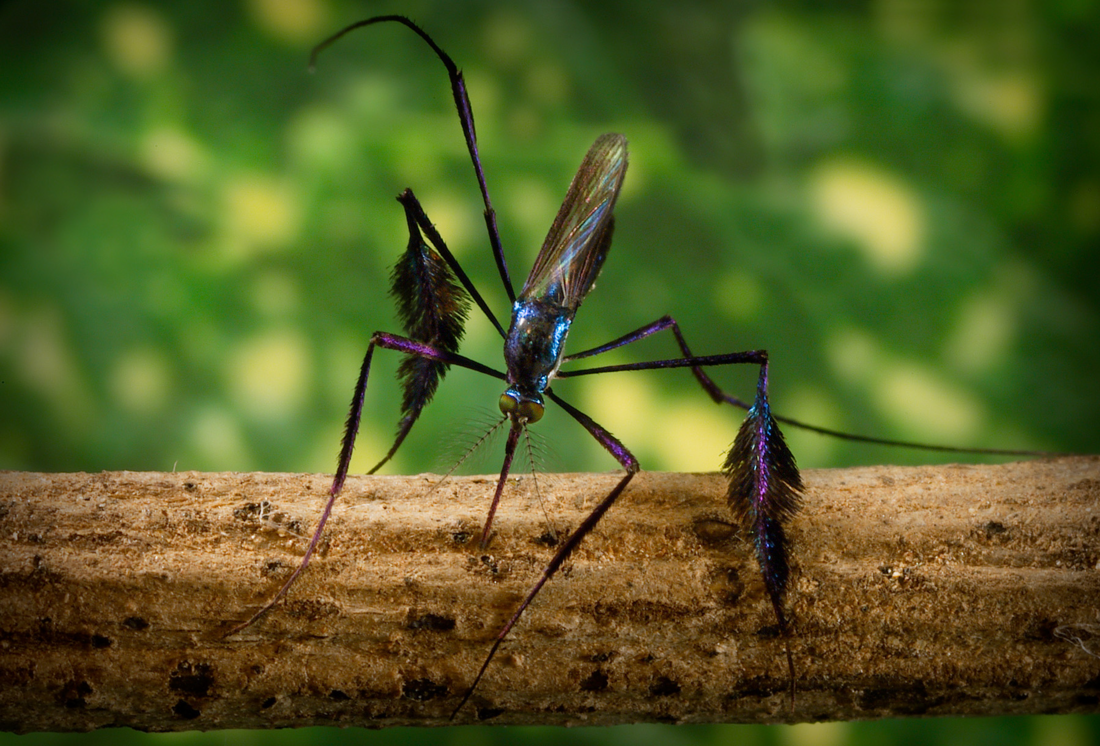Top Qs
Timeline
Chat
Perspective
Sabethes cyaneus
Species of mosquito From Wikipedia, the free encyclopedia
Remove ads
Sabethes (Sabethes) cyaneus, is a species of mosquito native to Central America and South America. It is recognized for its striking iridescent blue scales and serves as a disease vector for the Zika virus, though it is not the primary vector. The larvae are facultative predators, using their siphon to capture prey, often other mosquito larvae, in their aquatic habitats.
Remove ads
Taxonomy
Sabethes cyaneus was first described by entomologist Johan Christian Fabricius in 1805. It belongs to the subgenus Sabethes within the genus Sabethes of the family Culicidae. A historical synonym for this species is Sabethes locuples, described by Robineau-Desvoidy in 1827, though S. cyaneus is the currently accepted name.[1]
Description
Adult Sabethes cyaneus are medium-sized mosquitoes distinguished by their iridescent blue scales, which cover their body and legs, giving them a metallic appearance. This feature has earned them the common name "blue mosquito." The proboscis is long and slender, adapted for piercing skin to feed on blood. Females, which are slightly larger than males, exhibit more pronounced ornamentation, particularly on their legs.[2]
The larvae are aquatic and possess a distinctive siphon, which serves dual purposes: respiration and predation. They use this siphon to grasp prey, primarily other mosquito larvae, showcasing their facultative predatory behavior.[3]
Remove ads
Distribution
Sabethes cyaneus is distributed across Central America and South America, ranging from Mexico in the north to Argentina in the south. It thrives in tropical and subtropical forested regions, where it breeds in natural water containers such as tree holes, bamboo internodes, and bromeliads.[4]
Ecology and Behavior
Sabethes cyaneus is a diurnal mosquito, active primarily during daylight hours. Females are hematophagous, feeding on the blood of various hosts, including humans, to support egg development, while males feed exclusively on nectar and do not bite. The species exhibits elaborate mating behavior, with males performing a courtship dance that involves displaying their ornamented legs to attract females.[5]
Larvae develop in small, shaded water bodies and are facultative predators. While they can subsist on detritus and microorganisms, they preferentially prey on other mosquito larvae when available, using their siphon to capture and hold their prey.[6]
Remove ads
Disease Transmission
Sabethes cyaneus is a known vector of the Zika virus, though it is not considered the primary vector—species such as Aedes aegypti and Aedes albopictus hold that role. It can acquire the virus by feeding on an infected host and subsequently transmit it to others. There is potential for involvement in transmitting other arboviruses, but further research is required to substantiate this.[7]
References
Wikiwand - on
Seamless Wikipedia browsing. On steroids.
Remove ads

